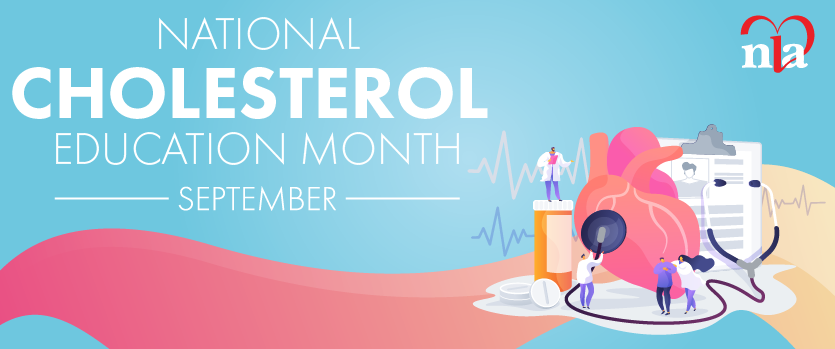Many observational studies have established a link between elevated triglycerides and adverse cardiovascular events.1 Experimental and Mendelian randomization studies have shown that triglyceride-rich lipoproteins participate causally in atherosclerotic cardiovascular disease (ASCVD).3,4,5 Further, elevations in remnant cholesterol (the cholesterol content of triglyceride-rich lipoproteins) are causally associated with low-grade inflammation and ischemic heart disease.6 Despite this established relationship, randomized trials studying the clinical impact of triglyceride reduction have shown mixed results. This review focuses on the established and emerging treatment options for hypertriglyceridemia.
Lifestyle Therapy: Digging into the Details
Though a growing number of medications have demonstrated safety and efficacy in treating hypertriglyceridemia, lifestyle therapy remains the first-line therapy for primary and secondary prevention.7 Namely, physical activity and diet are highly effective in reducing triglycerides and provide a myriad of pleiotropic health benefits. The evidence for lifestyle therapy for triglyceride reduction is strong enough that it was a major focus of the recent 2021 Expert Consensus Decision Pathway on the Management of ASCVD Risk Reduction in Patients with Persistent Hypertriglyceridemia, a pathway endorsed by the NLA.8
Physical Exercise: Regular aerobic activity increases fatty acid oxidative capacity and enhances triglyceride hydrolysis in skeletal muscle, resulting in additional energy production during exercise.9 While regular resistance and aerobic training can decrease plasma triglyceride levels by 6 and 11 percent, respectively10, these activities also attenuate postprandial lipemia. The degree of postprandial lipemia is associated with increased ASCVD risk and thus, reduction of these levels is of critical importance.11,12
Diet: In addition to reducing caloric content, what you eat and when you eat also affects triglycerides.
What You Eat: Eating high-protein, low-carbohydrate diets, reducing sugar-sweetened beverages, and alcohol reduction all lower triglycerides. High-fat, low-carbohydrate diets increase triglyceride reduction in response to weight loss, whereas low-fat, high-carbohydrate diets decrease triglyceride reduction in response to weight loss.13 One meta-analysis found that all carbohydrate-restricted diets result in significant weight loss from baseline, with very-low-carbohydrate diets (defined as <10% of calories from carbohydrates) resulting in the most pronounced triglyceride reduction.14 Another analysis showed that isocaloric higher protein diets result in increased weight loss and lower triglycerides compared to standard protein diets.15
Patients should also decrease added sugars and sugar-sweetened beverages. Simple sugars (mono and disaccharides) increase triglycerides more than oligo and polysaccharides (complex carbohydrates as seen in fruits and vegetables).16
Alcohol also increases serum triglycerides in a dose-dependent manner. One meta-analysis of 42 studies found that just one ounce of alcohol per day causes a 5-10% increase in triglycerides.17 Alcohol also impairs chylomicron hydrolysis and increases triglyceride production, thereby having a synergistic effect when coupled with meals with saturated fat.18,19
Genetic chylomicronemias are an important exception to high-fat, low-carbohydrate diets lowering triglycerides. Patients with familial chylomicronemia have fat-driven hypertriglyceridemia, for which the mainstay of therapy is a very-low-fat diet.20
When You Eat: In addition to what you eat and how much you eat, when you eat is also important. Intermittent fasting (defined alternate day 24-hour fasts or 24-hour fasts up to twice weekly) has been shown to decrease weight and triglycerides, with the greatest triglyceride reductions occurring in those with the most weight loss. Further, there is some evidence that patients can lose as much weight with intermittent fasting compared to patients who attempt continuous calorie restriction. One meta-analysis of six studies found similar weight loss between intermittent and continuous energy restrictions (~25% of recommended energy intake).21 Another meta-analysis found that intermittent fasting reduced total circulating cholesterol, LDL-C, and triglycerides compared to control groups.22
The Effects of Weight Loss: Diet and exercise have synergistic effects on weight loss. Weight loss can lower triglycerides by up to 70%.23 A five to ten percent reduction in total body weight corresponds with a roughly 20 percent reduction in triglycerides for most patients 24, although the effects of weight loss are often more pronounced in individuals with abdominal obesity or metabolic syndrome.25 Moreover, triglyceride reduction is proportional to the decrease in total weight; an average patient can expect a two percent decrease in triglycerides with every kilogram of weight loss.26
When Lifestyle Therapy is Insufficient: Though lifestyle therapy and addressing secondary causes of hypertriglyceridemia are first-line treatments, they may be necessary but insufficient treatments for patients with hypertriglyceridemia.
Ruling Out Secondary Causes: An exhaustive list of secondary causes of hypertriglyceridemia is beyond the scope of this paper. Several medications (including atypical antipsychotics, immunosuppressants, HIV protease inhibitors, glucocorticoids, oral estrogens, beta-blockers, thiazides, and bile acid sequestrants), diseases (chronic kidney disease, hypothyroidism, rheumatoid arthritis, poorly controlled diabetes), and disorders of metabolism (metabolic syndrome, pregnancy-associated weight gain) can increase triglycerides. A thorough review of active medications and comorbidities should be done prior to considering triglyceride-lowering pharmacotherapy.
Statins and Add-On Therapy: Patients with hypertriglyceridemia who cannot meet triglyceride goals after lifestyle therapy should be considered for medical management.
Though they are appropriately recognized for their contribution to LDL-C and non-HDL cholesterol reduction, statins also result in a 10-30% reduction in triglycerides.27 Many patients with hypertriglyceridemia will have a concomitant indication for statins, making statins in addition to lifestyle therapy an appropriate first treatment. In patients with persistent fasting triglycerides ≥ 150 mg/dL and an LDL-C of ≥ 100 mg/dL, statin therapy is an appropriate first-line choice per 2018 AHA/ACC guidelines.7,8
Fibrates: Several statins are substrates for organic anion transporting polypeptide (OATP), a peptide inhibited by gemfibrozil. This can result in significantly elevated statin concentrations, and an increased risk for myopathy when statins and gemfibrozil are combined.28
Fibrates have shown benefits as monotherapy in patients with coronary artery disease and low HDL-cholesterol, and have been shown to lower triglycerides by 30-50%.29 However, the more recent Fenofibrate Intervention and Event Lowering in Diabetes (FIELD)30 and Action to Control Cardiovascular Risk in Diabetes (ACCORD)31 trials found no clinical benefit of fenofibrate on cardiovascular events in patients on background statin therapy. Though the FIELD trial showed no signal for a macrovascular benefit to Fenofibrate, there was a significant reduction in microvascular complications. Patients on Fenofibrate had less albuminuria progression, a lower risk of distal limb amputations, and a 30% reduction in the need for laser therapy in patients with and without diabetic retinopathy.
Omega-3-Fatty Acids: Combinations of EPA and DHA or EPA alone have also been shown to reduce triglycerides with controversial clinical results. The A Study of Cardiovascular Events in Diabetes (ASCEND)32, VITamin D and omega-3 trial (VITAL)33, and OMega-3 fatty acids in Elderly patients with Myocardial Infarction (OMEMI)34 trials studied EPA plus DHA and showed no significant reduction in cardiovascular endpoints when added to statins. Similarly, the Long-Term Outcomes Study to Assess Statin Residual Risk with Epanova in High Cardiovascular Risk Patients with Hypertriglyceridemia (STRENGTH) trial studied EPA plus DHA compared to a corn oil placebo and found no differences in the primary (cardiovascular death, MI, stroke, revascularization, and unstable angina) or secondary endpoints.35
Trials of EPA alone have shown different results. The JELIS trial found a 19% reduction in coronary events in the EPA group compared to the control - an effect that was independent of LDL-C.36 Similarly, the Reduction of Cardiovascular Events with Icosapent Ethyl–Intervention Trial (REDUCE-IT) found that Icosapent Ethyl (purified EPA) reduced the composite endpoint of cardiovascular death, nonfatal MI and stroke, coronary revascularization, and unstable angina by 26% compared to placebo at a median follow-up of 4.9 years (HR 0.74, 95% CI 0.65-0.83, p<0.001).37 The Effect of Icosapent Ethyl on Progression of Coronary Atherosclerosis in Patients with Elevated Triglycerides on Statin Therapy (EVAPORATE) trial showed reductions in low-attenuation plaque on coronary CT compared to mineral-oil placebo.38
Potential reasons for differences between these trials and the STRENGTH trial are the lower EPA levels achieved in STRENGTH, more patients with established cardiovascular disease in the REDUCE-IT Trial, and the potential adverse effects of the mineral oil placebo in the REDUCE-IT trial.
Emerging Agents: All FDA-approved fibrates are relatively weak PPAR a agonists, which stimulate lipoprotein lipase resulting in increased VLDL clearance. Though recent fenofibrate trials have not shown significant reductions in cardiovascular events 31,39, post-hoc analyses have shown the greatest benefit in patients with the highest baseline triglyceride levels.40 The Pemafibrate to Reduce Cardiovascular Outcomes by Reducing Triglycerides in Patients with Diabetes Trial (PROMINENT) is evaluating the safety and efficacy of Pemafibrate (K-877), a strong PPAR a agonist, in triglyceride reduction in patients on background statin therapy.41 It allocated approximately 10,000 patients with type 2 diabetes and triglyceride levels 200-499 mg/dL to Pemafibrate or placebo. The expected follow-up is 3.75 years, with a scheduled completion date of May 2022. Another ongoing outcome trial involves the use of EPA in coronary artery disease. The Randomized trial for Evaluation in Secondary Prevention Efficacy of Combination Therapy - Statin and Eicosapentaenoic Acid (RESPECT-EPA) is evaluating the effect of EPA added to background statin therapy on cardiovascular events in patients with coronary artery disease.42
Summary: Important Considerations in Hypertriglyceridemia Management
Observational data have suggested a relationship between hypertriglyceridemia and an elevated risk for atherosclerotic cardiovascular disease; experimental data have provided several causal mechanisms. Though evidence for the clinical impact of triglyceride reduction is mixed, several recent trials have suggested a benefit of triglyceride-lowering in reducing cardiovascular events—lifestyle therapy, including diet and regular aerobic exercise, results in the reduction of triglyceride-containing lipoproteins. Dietary modifications to reduce triglycerides include high-protein, low-carbohydrate diets, time-restricted eating, and sugar-sweetened beverages and alcohol reduction. Medical management includes statins, fibrates, and omega-3 fatty acids, though data showing a reduction in cardiovascular events with the latter two are mixed. The strong PPAR a agonist Pemafibrate in patients with type 2 diabetes and EPA in patients with coronary artery disease are two areas of active investigation.
Disclosure statement: Dr. Buda has no financial disclosures to report. Dr. Zellmer has no financial disclosures to report. Dr. Miedema has no financial disclosures to report.
References are listed on the Spring 2022 LipidSpin .pdf on www.lipid.org





.jpg)
.png)













